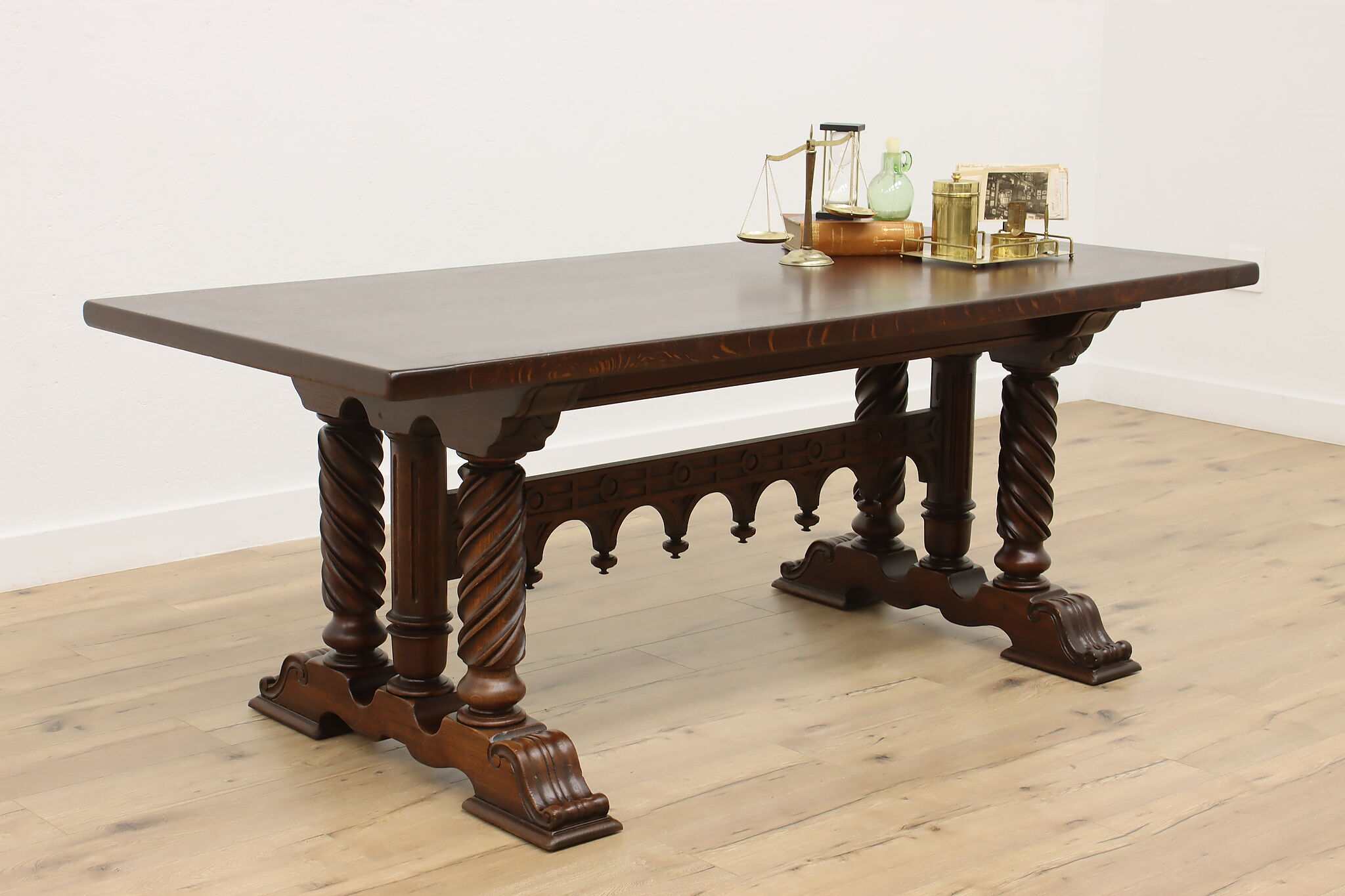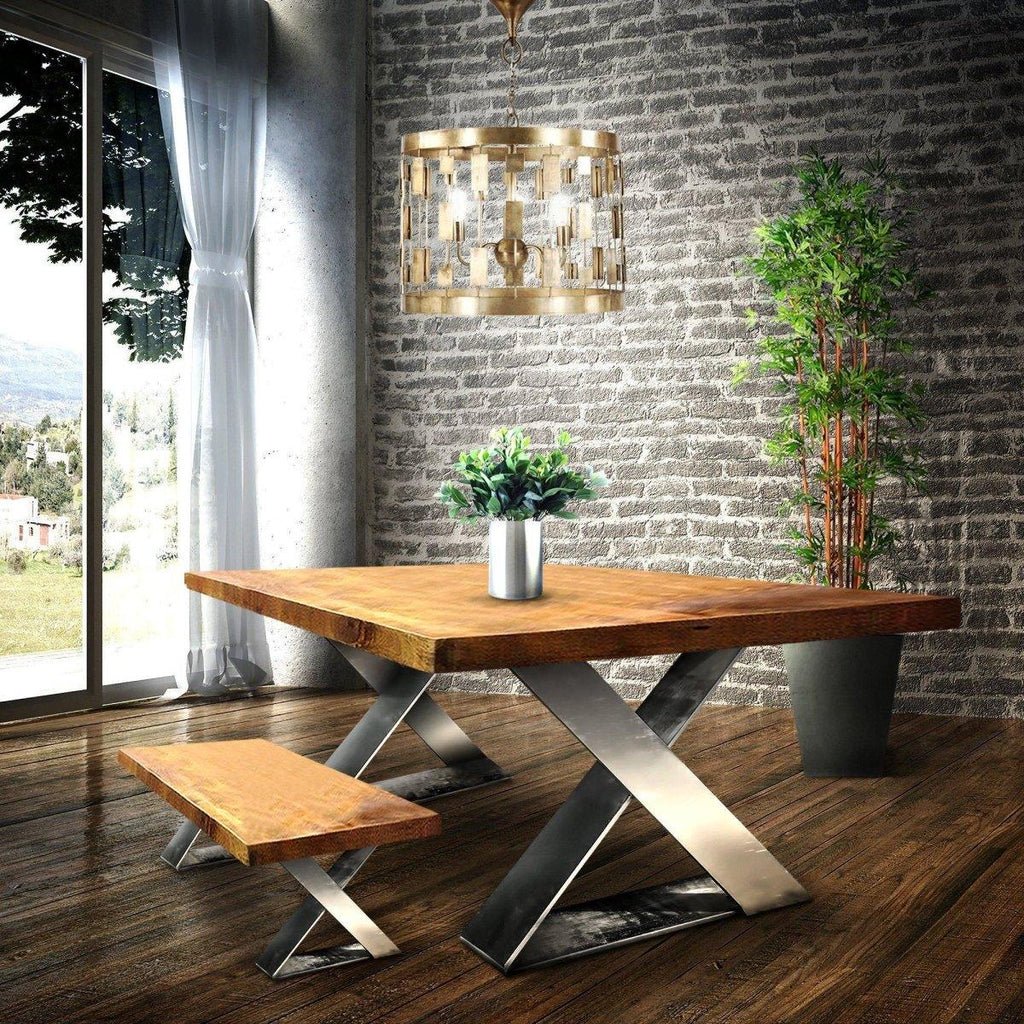Simple Steps to Replacing Old Dining Room Table Legs with New Ones
Simple Steps to Replacing Old Dining Room Table Legs with New Ones
Blog Article
Expert Tips for Installing Dining-room Table Legs for Optimum Stability
When it comes to setting up dining area table legs, accomplishing maximum stability is paramount for both performance and visual appeals. What specific methods can boost security also further?
Select the Right Legs
When picking the suitable legs for your eating area table, it is necessary to take into consideration both functionality and aesthetic appeals. The legs you pick will considerably affect the general style and stability of the table. First, evaluate the table's intended usage; if you anticipate frequent events, sturdier legs, such as those made from strong timber or steel, might be better, as they provide enhanced durability and support.
Conventional eating tables generally vary from 28 to 30 inches in height, so make sure the legs line up with this standard for convenience. Tapered legs can add a contemporary touch, while turned legs might communicate an extra classic aesthetic.

Select Appropriate Hardware
How can the appropriate hardware enhance the stability and long life of your dining-room table? The choice of ideal hardware is critical to guaranteeing that the legs of your table are firmly attached and able to hold up against routine use. High-grade screws, screws, and braces give the essential toughness to sustain the weight of the table, along with any additional tons positioned upon it during meals or celebrations.
When choosing screws, choose those made from resilient materials such as stainless steel or brass, which resist deterioration and maintain honesty gradually. The size of the screws is equally crucial; they ought to permeate deeply right into the table's framework without jeopardizing stability. For bolted connections, think about using lock washing machines to avoid loosening up because of resonance or movement.
Additionally, making use of edge braces can add additional assistance, specifically for larger tables or those with much heavier tops. These brackets distribute weight evenly and assist keep the table's shape. Making sure that the equipment you pick is proper for the particular materials of your table will certainly better boost its total stability and longevity, allowing you to appreciate your eating experience for several years to come.
Ensure Appropriate Positioning
Appropriate placement of dining area table legs is essential for both visual allure and functional security. Misaligned legs can bring about an unequal tabletop, which may not only be aesthetically unappealing but additionally endanger the table's use. To achieve optimum alignment, begin by measuring the range from the table's edges to the leg accessory factors. This guarantees that each leg is located equidistant from the edges, producing a balanced appearance.
Make use of a degree during installment to verify that each leg is perpendicular to the table top. It is advisable to note the preferred leg settings on the underside of the table with a pencil or covering up tape prior to securing them.
Furthermore, confirm the alignment after the first screws are tightened up, as modifications might be needed before totally safeguarding the hardware. By focusing on appropriate positioning, you not just improve the table's general layout however additionally ensure that it remains stable and functional for several years to find.

Consider Weight Distribution
After ensuring correct positioning of the dining area table legs, it's essential to take into consideration weight circulation to enhance stability and functionality. dining room table legs. Appropriate weight circulation is essential in stopping wobbling and ensuring that the table can support its desired tons without threat of tipping or breaking down
When positioning the legs, ensure they are put at equal ranges from the facility of the table to uniformly distribute the weight across the structure. Take into consideration the weight of the tabletop and any kind of products that will often hinge on it, such as tabletop devices or decorative pieces. Tables with much heavier surface areas must preferably have legs positioned closer to the corners, as this optimizes the base of support and reduces the threat of instability.
Furthermore, if the table is intended for use in a high-traffic area, think about making use of much heavier materials for the legs or adding supporting aspects, such as cross-bracing or a reduced rack - dining room table legs. These modifications can help keep balance and protect against moving throughout use. Ultimately, a well-considered weight distribution strategy will dramatically enhance the table's overall performance, ensuring it stays a functional and attractive focal point for your eating space
Test Stability Before Use
Evaluating the security of the dining area table before usage is an important step that should not be forgotten. If the table shows instability, determine the legs or joints that might require modification.
Following, inspect Visit This Link that all fasteners and screws are tightened appropriately. Loosened links can cause instability and possible damages in time. If essential, make use of wood glue on joints to boost stability, guaranteeing to enable sufficient drying time.

Verdict
To conclude, the setup of dining-room table legs requires mindful consideration of materials, hardware, alignment, and weight circulation to achieve optimum security. By picking strong legs and top quality fasteners, making certain accurate positioning, and dispersing weight evenly, the structural honesty of the table can be dramatically enhanced. Conducting a stability test before routine use better guarantees that the table will stand up to everyday stress, thus providing a trusted and secure dining experience.
When it comes to mounting dining space table legs, accomplishing optimum stability is vital for both capability and visual appeals. The legs you pick will considerably influence the total design and stability of the table (dining room table legs). Common dining tables commonly range from 28 to 30 inches in elevation, so guarantee the legs align with this criterion for comfort.Appropriate positioning of dining space table legs is necessary for both visual appeal and functional security.In final thought, the setup of eating space table legs requires cautious link consideration of products, hardware, positioning, and weight circulation to attain maximum stability
Report this page